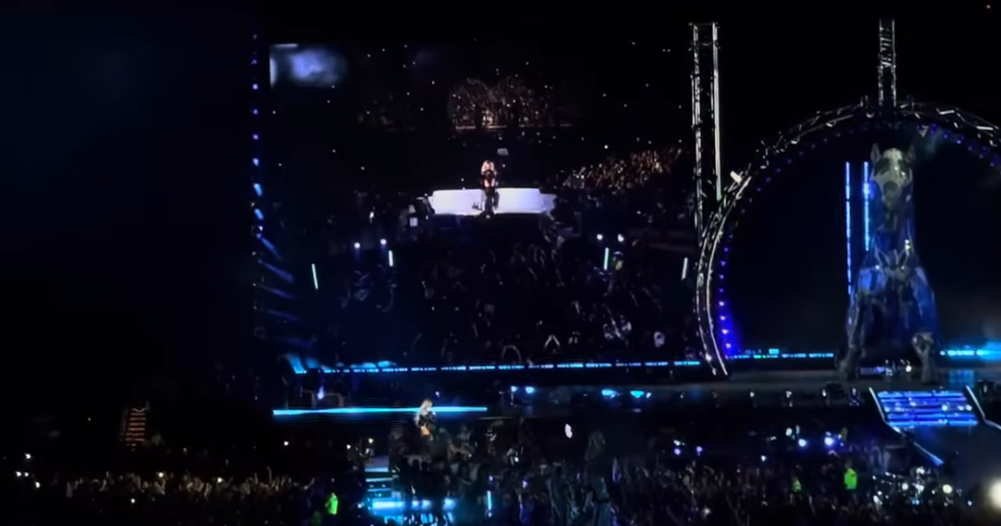Kansas City, subtly self-assured and incredibly expressive, moves to its own beat. Its music scene produces timeless soundscapes that inspire entire generations rather than chasing trends or begging for attention. Through smoky lounges, small clubs, and expansive festivals, the city’s melodies reverberate, creating a cultural pulse that never stops.
Its tale starts with defiance rather than fame. While Prohibition made other places less bright in the 1920s, Kansas City’s speakeasies were a blaze of activity. Late-night jam sessions became groundbreaking sound experiments as jazz musicians turned constraints into freedom. This improvisational energy proved to be incredibly powerful in forming the characteristics that would eventually come to characterize swing music.
Grown in the clubs of Kansas City, Count Basie’s orchestra produced a sound that was both disciplined and free-spirited, a rhythm that combined the blues with something remarkably vibrant. Duke Ellington, Benny Goodman, and other generations were impacted by those harmonies. The musicians of Kansas City created an attitude that was fearless, soulful, and unapologetically human in addition to playing notes.
The musical code of America had already been altered by Kansas City by the time Charlie Parker left the 18th & Vine neighborhood. Parker’s saxophone, which is supple and erratic, encapsulated the spirit of the city’s pulse—constantly exploring and changing. For generations of musicians who viewed music as conversation rather than competition, that restless creativity proved especially advantageous.
Profile – Kansas City Music Heritage
| Category | Details |
|---|---|
| City Name | Kansas City, Missouri |
| Genre Legacy | Jazz, Blues, Rock, Folk, Hip-Hop, Alternative |
| Key Figures | Count Basie, Big Joe Turner, Charlie Parker, Tech N9ne |
| Iconic Venues | 18th & Vine District, Knuckleheads, The Blue Room, The Uptown Theater |
| Landmark Projects | Sounds of the City Documentary by Dustin Phillips |
| Historical Milestones | Birthplace of Jump Blues, Epicenter of 1930s Swing Era |
| Current Focus | Music Economic Development Strategy |
| Reference | https://www.kcur.org/podcast/up-to-date/kansas-city-music |

Jazz was just one aspect of the city’s influence. Kansas City unwittingly gave birth to rock ‘n’ roll when Big Joe Turner stood on 12th and Main and sang what would become “Shake, Rattle and Roll.” Elvis Presley and The Beatles would later be electrified by the unadulterated joy and rebellion in his voice. The amount of contemporary music that can be traced back to a single Kansas City street corner is astounding.
The city’s music evolved with remarkable adaptability over the decades. The folk era of the 1960s introduced poetic storytelling to coffee shops such as The Vanguard, which provided a platform for young idealists, some of whom would go on to perform with artists like Janis Joplin and Bob Dylan. These musicians demonstrated that Kansas City was as introspective as it was rhythmic by using song to ask questions, express grief, and celebrate.
A new wave emerged in the 1990s. The “KC Sound” was introduced into the indie and alternative scenes by bands like Season to Risk and The Get Up Kids, who combined experimental edge with Midwest sincerity. Their impact went well beyond local boundaries, influencing the development of the early 2000s alt-rock and emo sounds. That movement demonstrated how Kansas City could change while maintaining its distinctive identity.
The energy feels revitalized and noticeably better today. Kansas City is now a center of live creativity thanks to venues like The Truman, Knuckleheads, and The RecordBar. Hip-hop artists like Tech N9ne and Rich the Factor bring contemporary fire to the mix, while jazz lounges like The Green Lady Lounge maintain the intimate, dimly lit atmosphere of the past. The way that tradition and change are balanced feels especially creative, and it gives Kansas City’s music scene a personality that no algorithm could match.
Dustin Phillips’s recent documentary, Sounds of the City, has done a remarkable job of illustrating this legacy. It examines how Kansas City’s musicians, both past and present, have influenced various genres and made its debut at the Uptown Theater. Phillips stated, “Kentuck City has influenced all of them, even though cities like Nashville or Austin may receive more attention.” His point—that greatness frequently blossoms in obscure places—is compelling and incredibly true.
The local government of Kansas City now recognizes the economic potential of the city’s cultural rhythm. The city is making investments in venues, festivals, and systems for supporting artists as part of a new Music Economic Development Strategy. Kansas City is turning creativity into civic currency by utilizing its musical resources. This strategy is very effective because it not only maintains but also enhances the city’s identity.
The American Jazz Museum, located at 18th & Vine, continues to preserve history by paying tribute to the greats and encouraging up-and-coming musicians. The way that young musicians reinterpret that history, however, is especially inspiring. Performers like Radkey, Hembree, and The Greeting Committee are reimagining Kansas City’s history by fusing analog soul with digital beats. Their improvisations are bold and limitless, and their artistry feels remarkably similar to Count Basie’s.
It is impossible to overlook the emotional thread that ties these eras together. Kansas City creates connections in addition to music. The city’s continuous creative dialogue is symbolized by the Mutual Musicians Foundation, which continues to host all-night jam sessions. Collaboration is still Kansas City’s best tool, as musicians come together for fellowship rather than competition.

